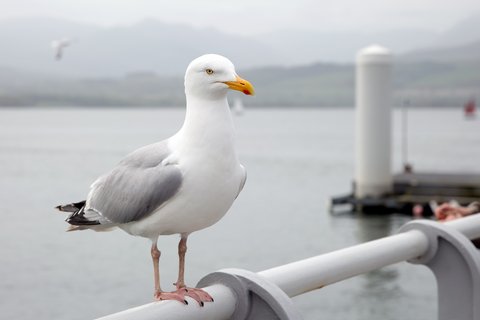Snagging a bird with a fish hook can be a fisherman’s worst nightmare. Not only is it excruciating to witness, but removing a hook without harming the bird is not always easy.
The last thing anyone wants to do is inflict unnecessary harm to an innocent creature. But handling birds is not something most people are familiar with. So here are some helpful tips from the Florida Fish and Wildlife Conservation Commission (FWC) that will help you the next time you snag a bird with a fish hook.
First off, says Kevin Oxenrider, a Florida wildlife biologist, do not cut the line.
“Birds that fly away with hook and line attached are at risk of getting entangled in trees and dying. And that line is left to possibly snare other wildlife,” Oxenrider said in a press release.
Th next step is to reel in the line. But don’t do it too jerky. Reel in nice and slow. If you are on a pier and the fish is in the water, do not reel the fish up to the pier but rather try to reach the bird yourself or lift it out of the water with a hoop net. If possible, enlist the assistance of others nearby.
Once you reach the bird, the next step is to remove the hook. But first you need to firmly grasp the creature. You might want to wear sunglasses at this point for some eye protection, especially if dealing with long-billed birds.
“Many people are afraid to grab a large bird like a pelican, but there’s a way to do it without hurting the bird or the rescuer,” Oxenrider said.
The best way to grasp a bird is to put a firm grip at the back of its head and press its wings against its body, not too hard to hurt it but strong enough to prevent it from flapping.
Next, inspect the hook. If the barb is sticking out, clip the barb and back the hook out. If the barb is not showing, it’s best to push it through and cut the barb at that point. Once you successfully get the hook removed it’s important to inspect the creature for any entanglements or additional hooks. Set it down on its feet and let it fly away naturally. Do not throw the bird up in the air to help it get airborne. Sometimes it needs a second to assess the situation.
If the bird has swallowed the hook or looks like it is not doing well, call a local rehabilitation facility.
Florida wildlife officials also offer the following tips to help prevent bird entanglements.
- Don’t feed pelicans and other waterbirds. This causes them to congregate in areas where they are more likely to get hooked or tangled in fishing line. Feeding pelicans is prohibited by law (F.A.C. 68A-4.001).
- Discard fish carcasses in lidded trash cans. Birds will feed on carcasses tossed in the water, which can lead to injury or death. Fish carcasses often are larger than the bait fish that birds normally feed upon, and the larger bones and spines can puncture the bird’s throat or digestive tract. Birds attracted by fish carcasses may gather in areas where they are more likely to become entangled in fishing line.
- Cast away from birds and shoreline vegetation.
- Collect and store loose monofilament line until it can be discarded properly.
- Keep bait buckets covered.
- Take unused bait home.
- Let other anglers know how to prevent bird entanglement.
© Scphoto48 | Dreamstime.com – Seagull perched on a pier








